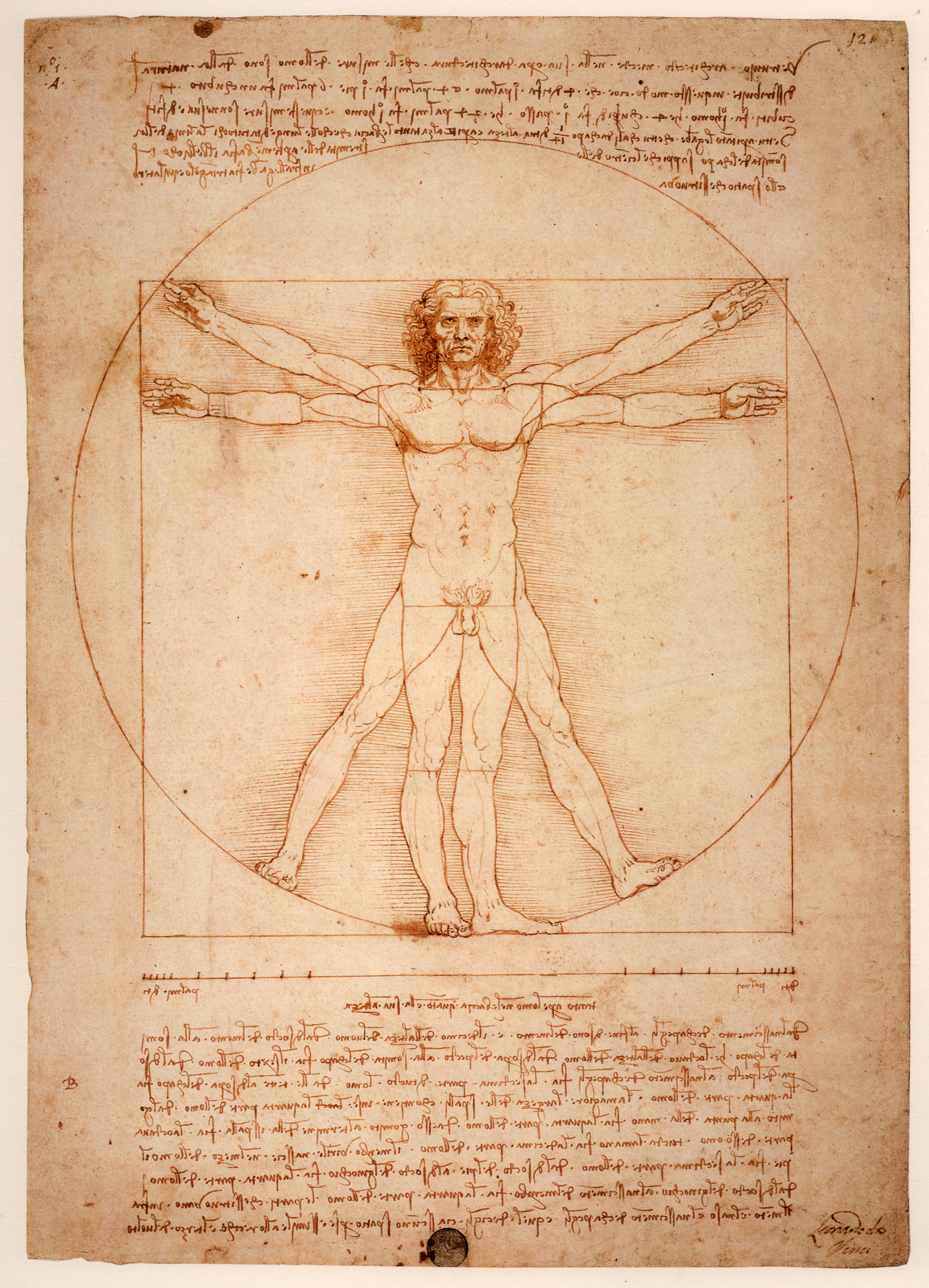Leonardo da Vinci, "Art and Science"
Perry Sourcebook, Vol. 1 [pp.296-299]
In his writings, Leonardo da Vinci reflects a fascination with the natural order of the world, suggesting a repudiation of the classical perceptions of knowledge, philosophy, and education.
The senses: key to human understanding
Eyesight and hearing are the ways by which humans can experience nature
Art is a medium by which these senses can be translated and experienced
Importance of nature
Direct interpretation of the nature as a way of understanding the universe
"He who has access to the fountain does not go to the water-pot."
i.e. studying nature is better than studying interpretations by other artists
The art of painting itself:
Leonardo approached painting very scientifically, focusing on two major areas:
Renaissance art increased the focus on the individual as the subject of art
da Vinci believed in a complex understanding of the body
in particular, he stressed the importance of understanding the motion of limbs
[perhaps suggesting a broader interest in action and pragmatism]
Ratios: an empirical understanding
Leonardo believed that figures must exhibit certain ratios of proportion
The Vitruvian Man (pictured) is a classic example of the well-proportioned human figure, as derived from the writings of Vitruvius
Ratios could translate the subjectivity of art into an objective science
The Perspective
Leonardo was an adamant believer in a larger perspective to his paitings
He devised complex backgrounds to give perspective to his work
The Mona Lisa is an example
Some implications:
importance of the individual: da Vinci put emphasis on individuals people in his works
interest in Greco-Roman thought: he was an avid reader of classical philosophy
pragmatism: Leonardo believed in being active and leaving a concrete mark on the world
a scientific world: these early writings suggest a transition to the fully modernized world-view which embraces science, reason, and secularism
the role of religion: Leonardo's art was still deeply religious in many ways; he found a balance between the two forces (relgion and secularism) which defined the Renaissance
the role of religion: Leonardo's art was still deeply religious in many ways; he found a balance between the two forces (relgion and secularism) which defined the Renaissance
a fresh perspective on learning: Traditionally, young artists had learned by studying the works of other masters. da Vinci favored a fresh approach, emphasizing the need to learn by one's self directly from nature. This attitude towards knowledge opened up a new world of scientific understanding in the modern world.

No comments:
Post a Comment